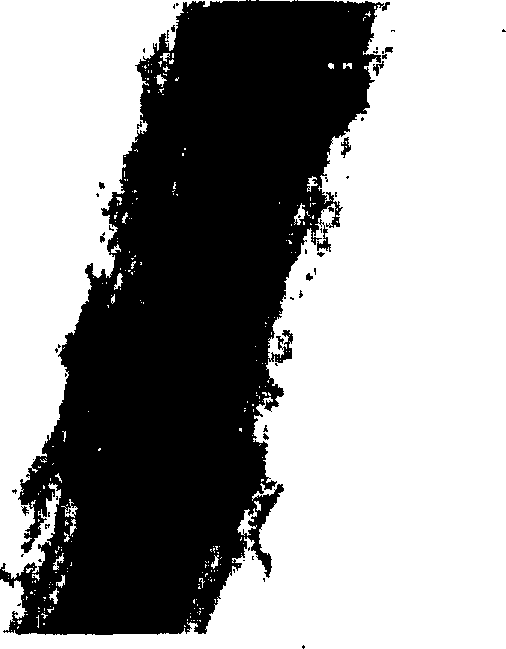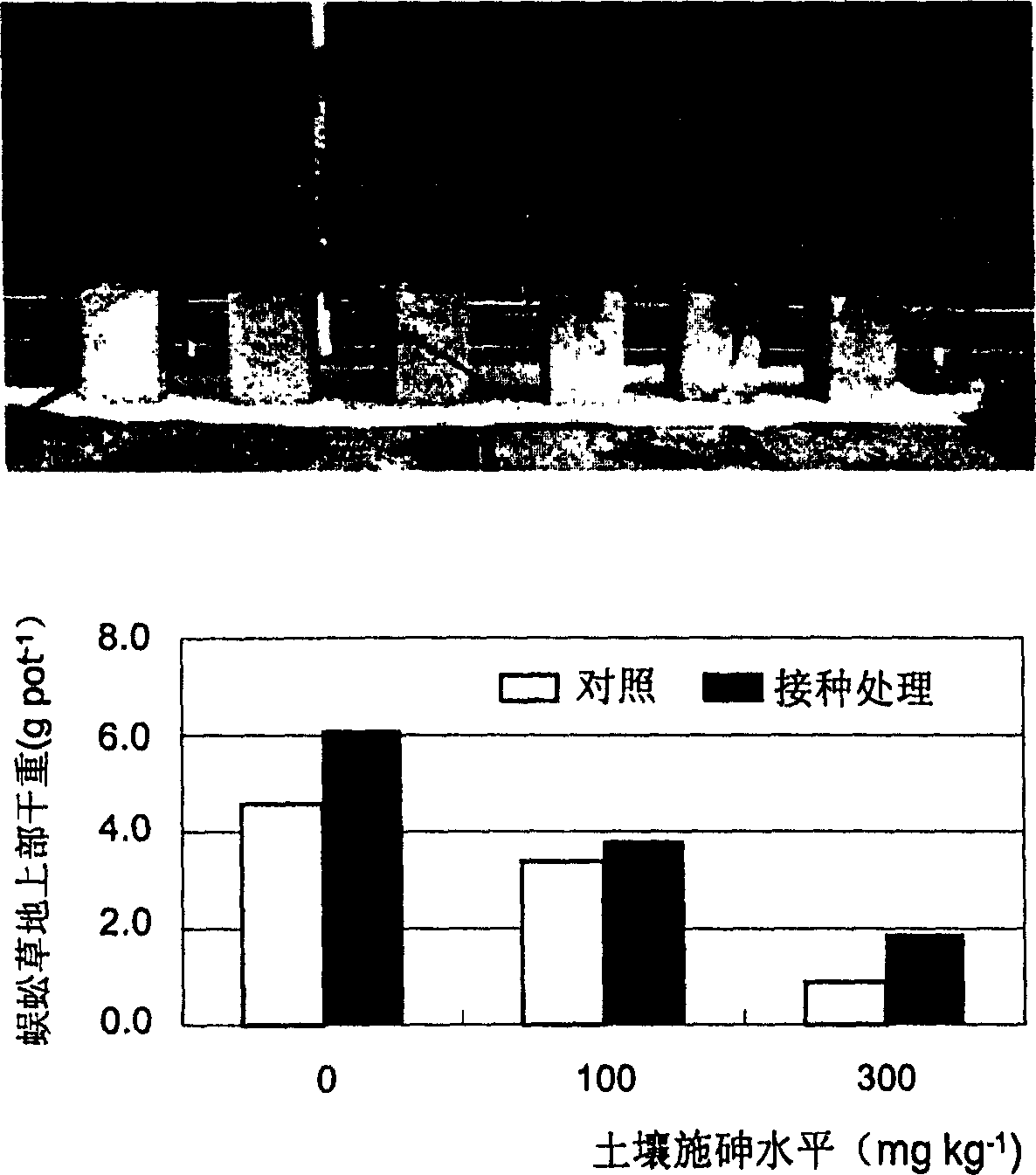Method for promoting plant restoration efficiency of arsenic polluted soil
A phytoremediation and soil remediation technology, applied in the field of arsenic-contaminated soil phytoremediation and polluted ecological restoration, can solve the problems of inhibiting the growth of centipede grass, slow growth rate, and growth restriction of centipede grass.
- Summary
- Abstract
- Description
- Claims
- Application Information
AI Technical Summary
Problems solved by technology
Method used
Image
Examples
preparation example Construction
[0042] The preparation of basic material among the present invention:
[0043] 1. Acquisition of hyperaccumulative plant Centipede grass seedlings
[0044] (1) In summer and autumn, the original materials of Centipede grass were collected from arsenic-polluted areas (such as realgar mining area in Shimen County, Hunan Province) to obtain Centipede grass spores. Preserve the spores at room temperature, under ventilated and dry conditions.
[0045] (2) Soil (non-polluting) and vermiculite are mixed in a ratio of 1:1 to obtain a culture substrate. After the substrate is sterilized (10KGy irradiation sterilization or 121°C high-pressure steam sterilization for 2 hours to kill pathogenic bacteria), mix base fertilizer (N, 200mg kg -1 , P, 50 mg kg -1 ; K, 150 mg kg -1. It can also be applied at the same time (an appropriate amount of other trace elements), put it into a pot or a seedling tray, and water according to 20% of the weight of the substrate. After the water penetrat...
Embodiment
[0055] The mycorrhizal fungus Glomus mosseae (Nicol. & Gerd) Gerdmann & Trappe uses maize as the host to multiply, and the rhizosphere soil containing the root segments of the host plant, mycorrhizal fungal spores and hyphae outside the root is used as the inoculant. Centipede grass (Pteris vittata L.) spores were pre-cultured to obtain seedlings for transplanting.
[0056] Arsenic-contaminated soil was collected from Chenzhou City, Hunan Province. Basic physical and chemical properties: pH (1:2.5 water extraction), 8.03; organic matter content, 5.25%; available phosphorus (Olsen-P), 15.3mg kg -1 ;Total arsenic content, 74.3mg kg -1 ; The soil is passed through a 2mm sieve and sterilized by irradiation (10KGy).
[0057] A square box made of plexiglass was used as a culture container. Each pot is filled with 1.5Kg of soil. In addition to the background arsenic concentration, the test also set two arsenic application concentrations: 100mg kg -1 and 300mg kg -1 . At each c...
PUM
| Property | Measurement | Unit |
|---|---|---|
| pore size | aaaaa | aaaaa |
Abstract
Description
Claims
Application Information
 Login to View More
Login to View More - R&D
- Intellectual Property
- Life Sciences
- Materials
- Tech Scout
- Unparalleled Data Quality
- Higher Quality Content
- 60% Fewer Hallucinations
Browse by: Latest US Patents, China's latest patents, Technical Efficacy Thesaurus, Application Domain, Technology Topic, Popular Technical Reports.
© 2025 PatSnap. All rights reserved.Legal|Privacy policy|Modern Slavery Act Transparency Statement|Sitemap|About US| Contact US: help@patsnap.com


